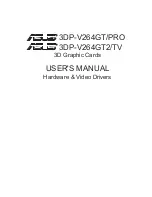
PCIe Low Profile
1P (IEEE 1284)
User Manual
English
LINDY No. 51246
www.lindy.com
Introduction
Thank you for purchasing the LINDY PCIe Low Profile one Port parallel
Card. This card is equipped with one 1284 centronics parallel interface.
The parallel port include IEEE1284 with speeds up to 15MB/Sec on the
Parallel port.
Port Specification
Parallel Port:
•
Chipset: Oxford 952
•
IEEE standard: IEEE 1284 Interface
•
Max. Speed: Up to 15MB/Sec
•
DB 25 Female Connector
Package Contents
1 x LINDY PCIe Low Profile 1P Card
LINDY User manual
LINDY Driver CD
Installation
1.
Turn off the power of your computer and remove the power
cable
2.
Install the PCIe Low Profile card into an available PCIe Low
Profile slot in your computer
3.
Connect the peripheral ie Printer, Modem, etc. to the adapters
port
4.
Re-connect the power cable & turn on the power of your
computer
PCI device listing display (for example…)
Bus
No
Device
No
Func
No
Vendor ID
Device
ID
Device Class
IRQ
0
7
1
8086
7010
IDE Controller
14
0
13
0
1409
7168
Simple COMM.
Controller
10
If the Vendor ID, Device ID, Device Class or IRQ aren’t displayed or an
error occurs, please try another PCI slot.
Once the hardware has installed correctly you can start installing the
software from the driver CD.
Pin Assignments
Parallel 25 Pin female connector pin assignments:
Parallel 25 Pin female connector :
Pin
Signal
Pin
Signal
Pin
Signal
1
STROBE
10
ACKNOWLEDGE
19
GROUND
2
DATA 0
11
BUSY
20
GROUND
3
DATA 1
12
PAPER EMPTY
21
GROUND
4
DATA 2
13
SELECT
22
GROUND
5
DATA 3
14
AUTO FEED
23
GROUND
6
DATA 4
15
ERROR
24
GROUND
7
DATA 5
16
INIT
25
GROUND
8
DATA 6
17
SELECT INPUT
26
GROUND
9
DATA 7
18
GROUND
Technical Specifications
•
Support x17 x1,x2,x4,x8,x16
(
lane
)
PCI-Express Bus
connector keys
•
Operating system: DOS, WIN 9.x, ME, NT, 2000, XP, 2003
Server, VISTA, Win7, LINUX,
•
Support ECP, EPP and SPP
•
Ready of the Intel and AMD 32/64-bit CPU System
•
Built-in 32 byte hardware FIFO
•
IRQ and IO address assigned by System
•
Certified by Microsoft WHQL, CE, FCC approval
•
PCB: 80 x 65 mm
Certifications
FCC Certifications
This equipment has been tested and found to comply with the limits for a
Class A digital device, pursuant to part 15 of the FCC Rules. These limits
are designed to provide reasonable protection against harmful
interference when the equipment is operated in a commercial
environment. This equipment generates, uses, and can radiate radio
frequency energy and, if not installed and used in accordance with the
instruction manual, may cause harmful interference to radio
communications. Operation of this equipment in a residential area is
likely to cause harmful interference in which case the user will be
required to correct the interference at their own expense.
This device complies with Part 15 of the FCC Rules. Operation is subject
to the following two conditions: (1) this device may not cause harmful
interference, and (2) this device must accept any interference received;
including interference that may cause undesired operation.
CE Certification
This
equipment
complies
with
the
requirements
relating
to
electromagnetic compatibility, EN 55024 and EN55022 class A for ITE,
EN61000-3-2/-3 the essential protection requirement of Council Directive
89/336/EEC on the approximation of the laws of the Member States
relating to electromagnetic compatibility.
Recycling Information
WEEE (Waste of Electrical and Electronic Equipment),
Recycling of Electronic Products
United Kingdom
In 2006 the European Union introduced regulations (WEEE) for the
collection and recycling of all waste electrical and electronic equipment.
It is no longer allowable to simply throw away electrical and electronic
equipment. Instead, these products must enter the recycling process.
Each individual EU member state has implemented the WEEE
regulations into national law in slightly different ways. Please follow your




















